Making Quilts for Beginners
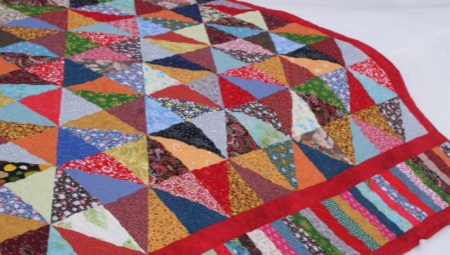
Making a patchwork quilt is more painstaking than sewing it from a single piece of material. But it is the multi-colored cheerful pieces of fabric, combined with love by the craftswoman, that create the atmosphere of comfort in the interior of the bedroom. Our ancestors sewed such things for the sake of economy, and today this is a whole direction in creativity (patchwork), which has a large number of techniques. Chaotic stitching of flaps is a thing of the past. The craftsmen of our time consistently connect parts cut in the form of regular geometric shapes - squares, rectangles, polygons. The works are logical and consistent, although they create a mood with an abundance of variegated patches.
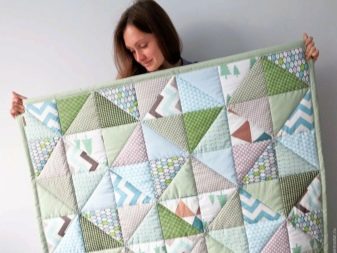
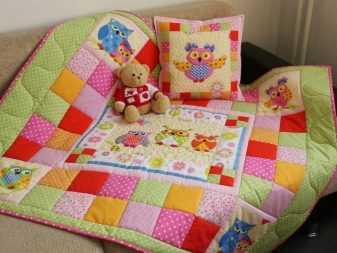
Peculiarities
The main feature of patchwork sewing is its uniqueness. The abundance of multi-colored and multi-textured pieces of fabric does not make it possible to repeat the work twice, so each piece of patchwork is exclusive. There are other advantages to patchwork.
- Profitability is due to the fact that the products are sewn from scraps of fabric or from old things.
- Patchwork is not limited in size, which makes it possible to sew blankets of different types, from tiny children to large models of non-standard shapes.
- The technique of working with fragments of fabric allows you to realize many of the craftswomen's fantasies, for example, “play” with color, lay out a drawing or insert an applique into the canvas.
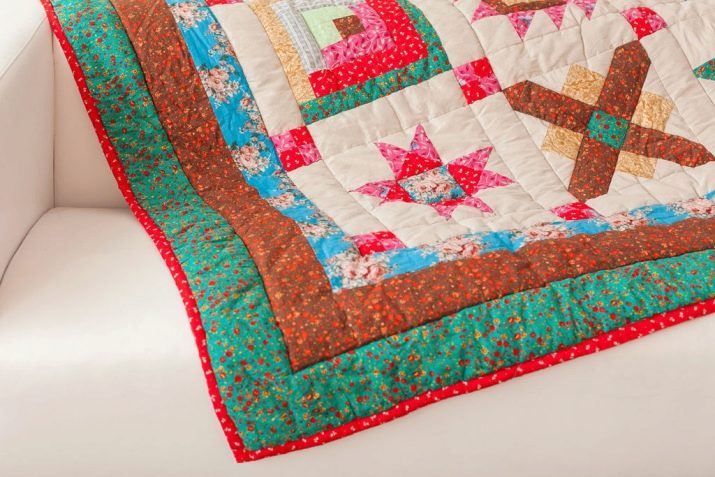
A patchwork quilt in the bedroom makes a homely environment comfortable. But it also makes some demands on the interior.
- It would be nice to support the colorful theme with other things: a collage on the wall or a patchwork rug by the bed.But the main thing is not to get carried away, the patchwork situation balances on the brink, between charm and bad taste, you need to try not to cross this line.
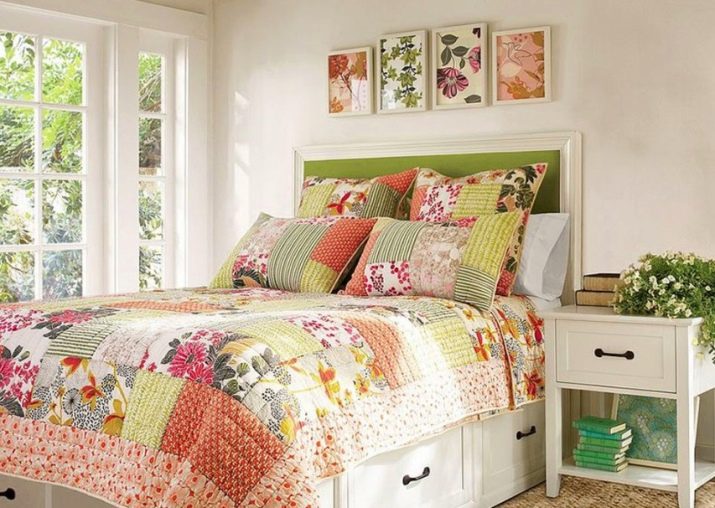
- In a small room, you can make a bright blanket with a small pattern. For large rooms, you should take large fragments for stitching as a basis, think over the color, the generality of the ornament or the storyline of the drawing.
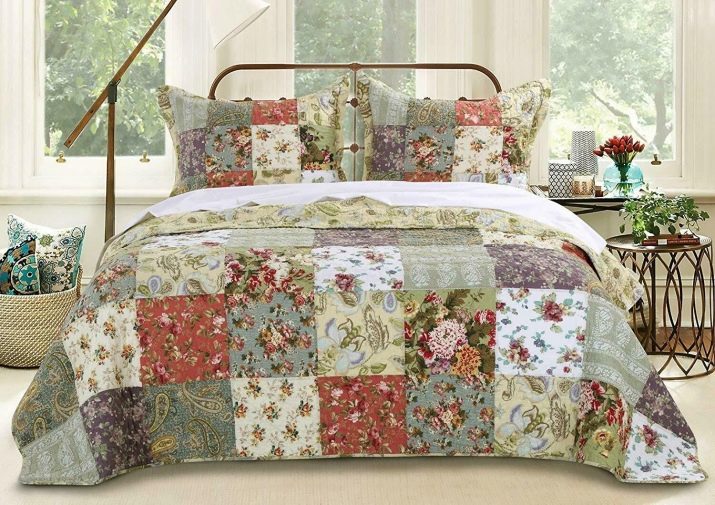
- For many interiors, it is important that the color scheme matches the decor in the room.
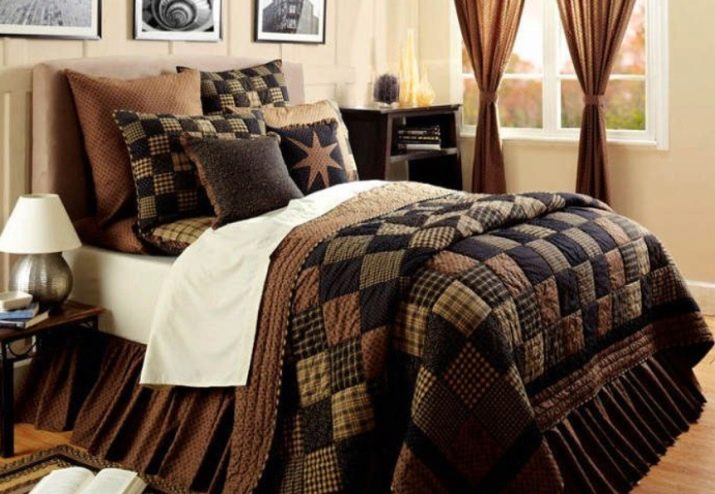
- The drawing should not put pressure on the vision, therefore, to create the canvas, only a few basic shades and 2-3 colors are chosen to form the background of the product.
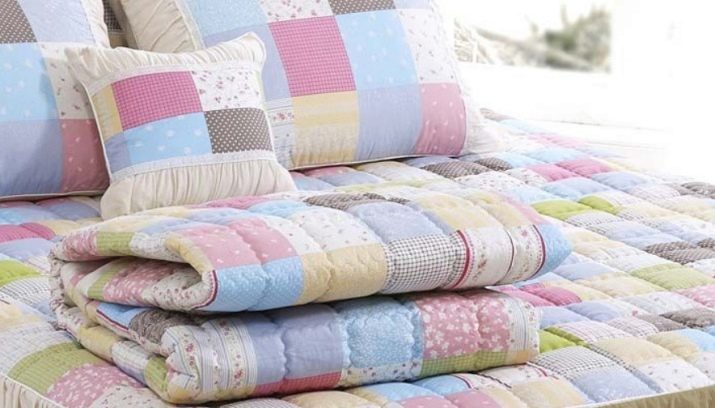
As you can see, patchwork is not a chaotic action, but a thoughtful and responsible creativity.
Choice of fabric
When choosing a fabric for patchwork products, the compatibility of textures and a thoughtful color scheme are important. The rest of the restrictions for creating patchwork canvases are not provided. Many people prefer to make bedspreads from fragments of natural fabrics, environmentally friendly and pleasant to the touch.
But for the comfortable use of the blanket, the lower lining layer is important, it is he who contacts the body, in most cases it is made of cotton.
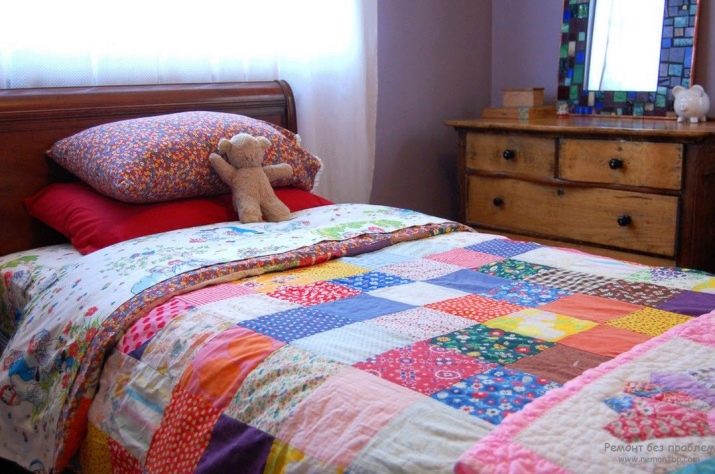
The following fabrics can be used for the patchwork layer.
- Cotton. Safe natural and durable material. A large number of fabrics have been created on the basis of cotton threads.
- Flannel. Often used to create blankets and envelopes for newborns. The flannel is soft and pleasant to the touch and contains cotton fiber.
- Linen. Thick, rough fabric is breathable. Has a high hygroscopicity, that is, it collects moisture, but does not release it.
- Kulirka. The thinnest cotton jersey, with beautiful smoothness, pleasant to the touch. Often used to create baby blankets.
- Fleece. The fabric is easy to care for. It belongs to synthetic products, but very light and soft, tactilely pleasant.
- Silk. Natural silk is expensive even as fragments. Sewing elements is more difficult than cotton, and the sliding surface is not to everyone's taste. But some styles (oriental, historical) need just such material. All of the above can be attributed to the atlas.
- Chintz. Natural beautiful material with rich colors and various ornaments. Calico blankets are inexpensive, fun, and smart. In the patchwork style, to create a blanket, you can use not only fabrics, but also threads, they make excellent knitted fabrics.
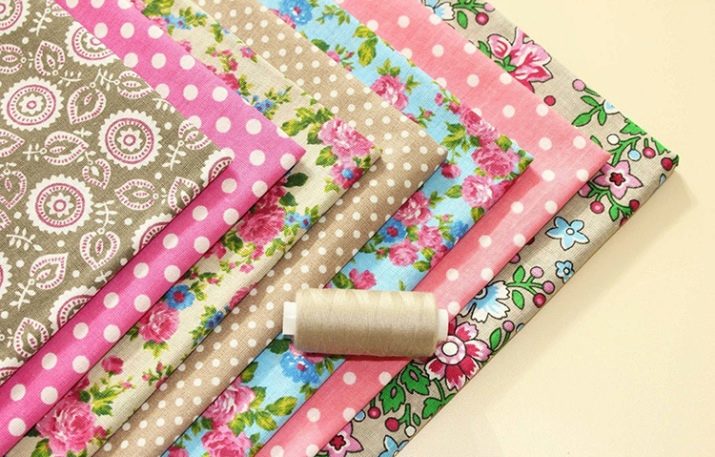
For the quilt filler, it is better to choose a light and thin material. It can be natural or synthetic, it is important that it can breathe easily.
- Cotton. Natural breathable filler. It resembles batting, only thinner and softer, respectively, and more expensive. It is recommended to wash before use to avoid shrinkage of the finished product.
- Cotton with polyester. The filler only benefits from the addition of a chemical material to cotton. It does not shrink, is breathable, has excellent quilting and is cheaper.
- Wool. Natural soft and warm material, easy to work with. But the blanket can shrink during washing, is not suitable for allergy sufferers and has a high cost.
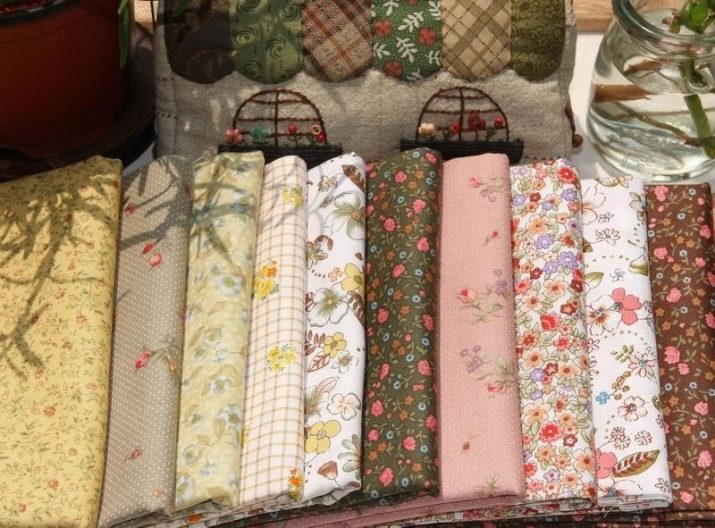
Step-by-step instruction
A blanket made of rags is easy to sew with your own hands. We offer a master class for beginners, with a detailed description of the cut, assembly and edging of the product.
Before starting work, the selected pieces of fabric should be washed or simply soaked in hot water.
They should shrink naturally so that deformation of the blanket does not occur during its use. Then the flaps are well ironed. Cotton fabrics can be sprayed with starch solution to improve their appearance.
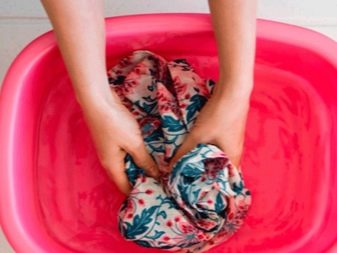
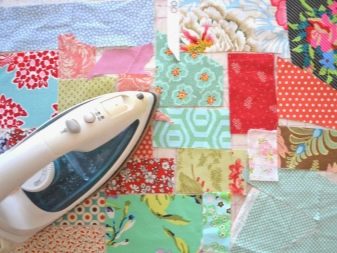
When choosing fragments, check them for compatibility. To do this, the flaps of different textures should be slightly pulled, the amount of stretch they must match.Poorly connects, for example, dense fabric with knitwear. If you ignore compatibility, the blanket will lose its shape over time. For the same reason, the direction of the threads is taken into account when stitching the fragments.
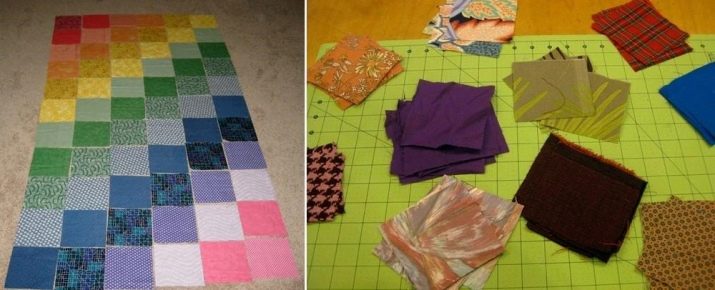
For work, you should prepare not only the flaps, but also the purl material, as well as the filler. You will also need threads, a sewing tool and a sketch of future work. One of the techniques available in patchwork is selected and a drawing of the details is thrown onto the paper. It is easier for beginners to work with squares or rectangles.
When choosing a color scheme, one should not forget about harmony.
Monochrome products look good. The basic tone of the blanket can match the color of the curtains or wallpaper. Children's bedspreads are made bright or tied to the gender of the child (for boys - for girls).
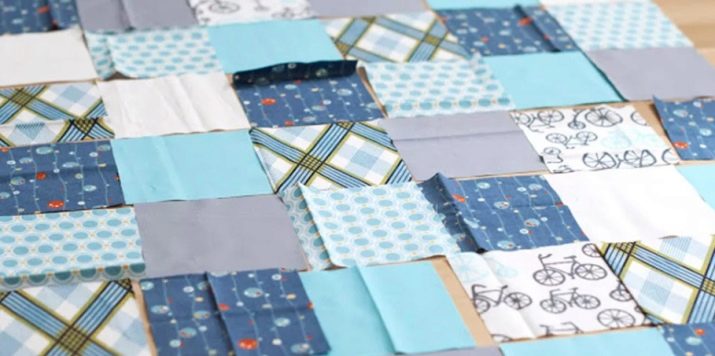
Sketching
Even professionals do not neglect the sketch, and for novice needlewomen, the calculation and scheme of both the basic part and the entire project is a prerequisite. Beginners are better off working with large parts. You can cut the same squares and just sew them together, but it is much more interesting to think over and fold the drawing, work with color. For this, sketches are created on which elements are drawn. According to the scheme, they are assembled into blocks, and cloth is sewn from the blocks.
To simplify the workflow, the parts on the diagram are numbered, the same numbers are transferred to fabric fragments.
Making templates out of cardboard or plastic makes your work even easier. With their help, flaps are easily cut and cut in the required quantity.
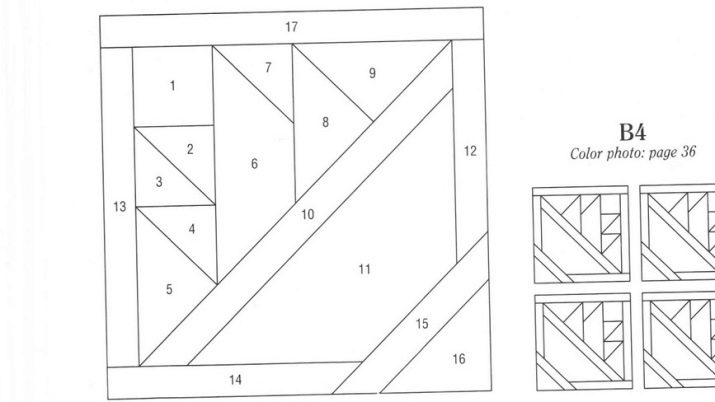
Cutting material
A patchwork ruler can make cutting work much easier. With a simple drawing (squares, stripes), you can do without it. During the cut, many factors are taken into account.
- The main thing is to remember that the cut should take place taking into account the share thread, otherwise there will be distortions.
- To cut the squares, it is enough to draw a grid on the fabric and use scissors. For the rest of the figures, you will need the participation of a template and a roller knife. Parts of particular complexity are developed using a special ruler.
- When cutting out, you need to be very careful, otherwise the stitching lines will not coincide with each other.
- When cutting out elements, you should leave 1.5 cm of fabric on all sides for allowances.
- The cut out parts should be numbered according to the diagram.
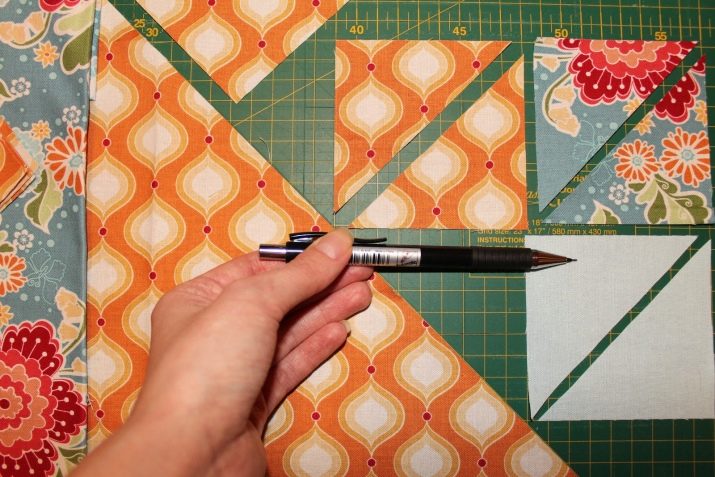
After cutting the fragments, they proceed to work with the substrate and fillers. They are cut out according to the selected sizes. Be aware of seam allowances when working with underlays. As for the details, it is easier for novice craftsmen to work with square elements. The substrate and all the fragments are smoothed well before assembly. Then you can try on: spread the substrate and lay out the squares on it, taking into account the tonality of the future product.
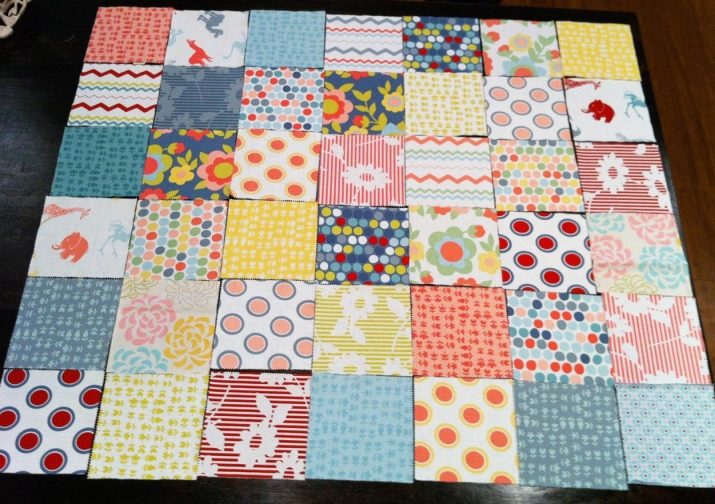
Assembling parts
It's easier to work with squares. The maximum size of the blanks is no more than 25x25 cm, the minimum is 6x6 cm. The most popular parameter of the part is 12x12 cm. The squares are collected together in strips, the length of which should coincide with the width of the future blanket. The finished strips are sewn together to form a large web.
It is necessary to ensure that the seams go along the seamy side of the product.
For a more complex drawing, blocks are assembled first. The numbered parts are sewn together according to the scheme. The assembly of the block should begin with large elements, and then small parts are added. During the workflow, you can use safety pins, which will help the fragments not to creep.
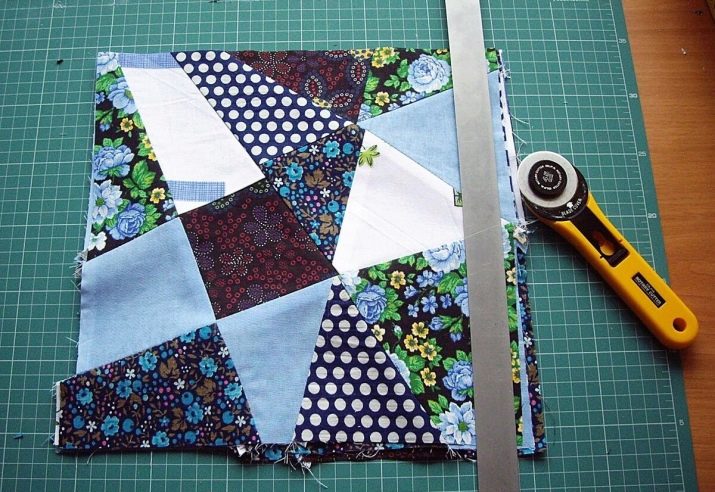
All parts are sewn together using edge seams. Finished blocks should be smoothed out before forming a canvas from them. But you can leave ironing for the final stage. When the patchwork layer is fully formed, it should be laid on the wrong side and carefully smoothen the joint seams, revealing the edges. Then you need to iron the seams from the front of the product.

When the patchwork is ready, they start sewing the quilt itself. The lining fabric is placed face down on the floor, a synthetic winterizer or other filler is laid on it and covered with a patchwork layer. This whole "sandwich" is stitched around the perimeter.
Some needlewomen assemble three layers in a different way.
Before placing the filler, they sew the lining to the bedspread on one side, then lay out the filler and cover it already fixed with a patchwork layer. It remains to sew three more sides of the product. This method is more reliable and requires fewer pins to secure the edges. At the last stage, the entire blanket is quilted with threads. If it is difficult to do this on a sewing machine, you will have to work manually.
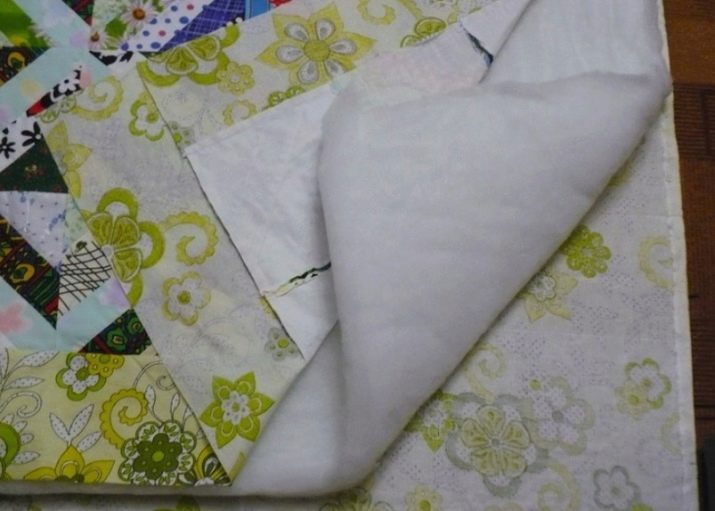
Edging and decoration
The edging is needed to hide the seams along the perimeter of the blanket and to give it an aesthetic look. For this, a piping is prepared, the color of which may match one of the shades involved in the patchwork canvas.
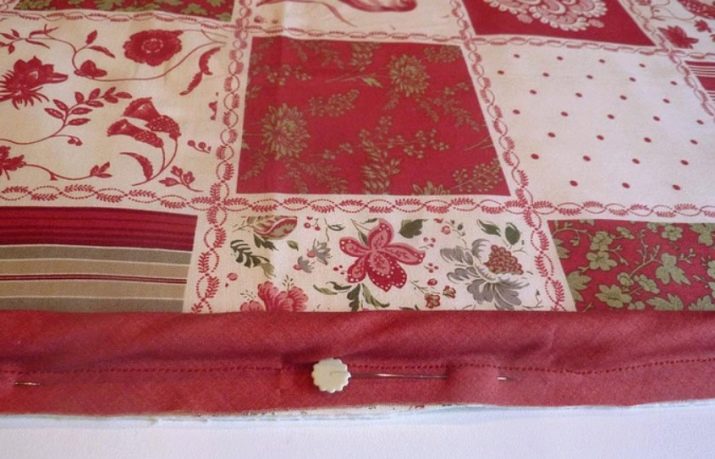
To complete the edging, follow these steps.
- Measure the perimeter of the blanket and add another 20 cm for the length of the piping.
- The width of the tape can be selected to taste. A popular value is 6-8 cm, excluding allowances.
- The cut strips of fabric are sewn together at an angle of 45 degrees into one large tape.
- The edging is steamed and ironed.
- One side of the full length of the tape is sewn to the lining of the blanket.
- The second edge of the edging lies on the front side of the product.
The finished blanket can be decorated with appliqués, lace, braid, beads, any decor that the needlewoman will like.
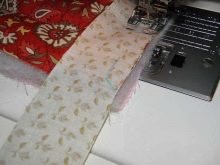
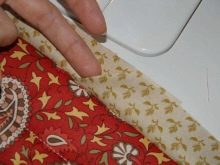
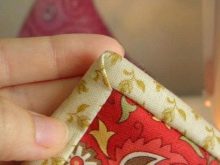
Examples of beautiful works
Patchwork is a beautiful art, not a rework of old fabrics. This can be seen by examining examples of original works presented in the photographs.
- Rows of houses, made up of pieces of fabric, look like streets on the canvas of a blanket.
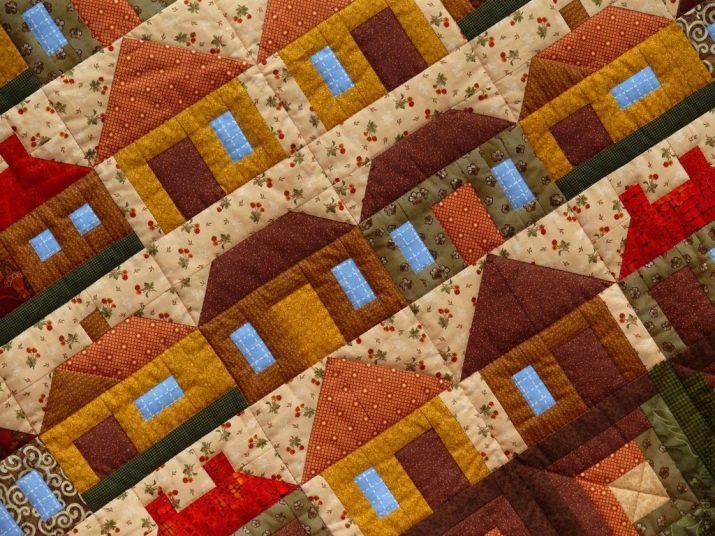
- A voluminous bedspread with original stitching brings comfort to the room setting.
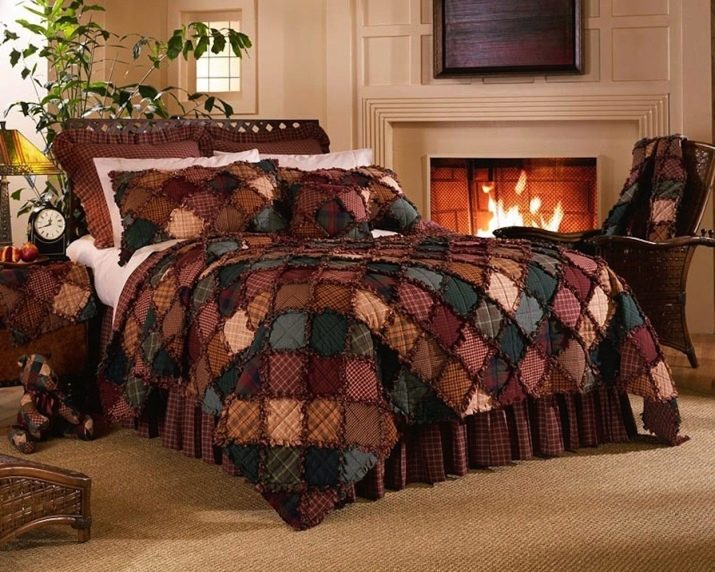
- Products for children often contain appliqués and resemble textile paintings. Contemplation of such creativity develops the imagination of toddlers.
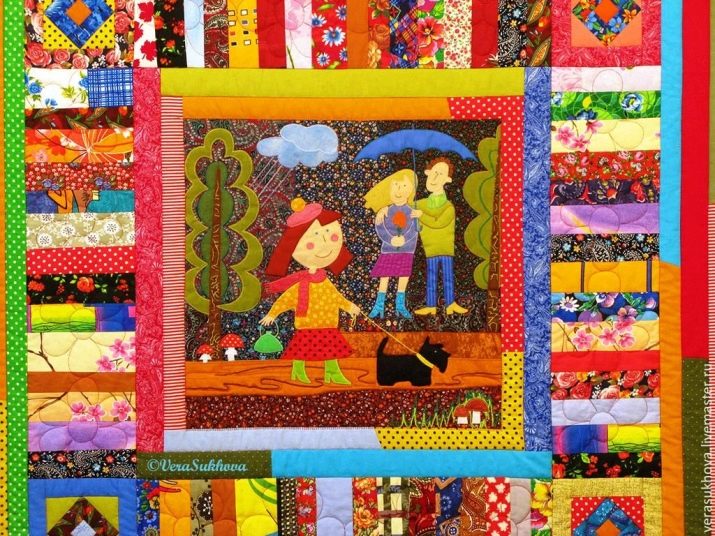
- Bed set in Provence style, made using patchwork technique.
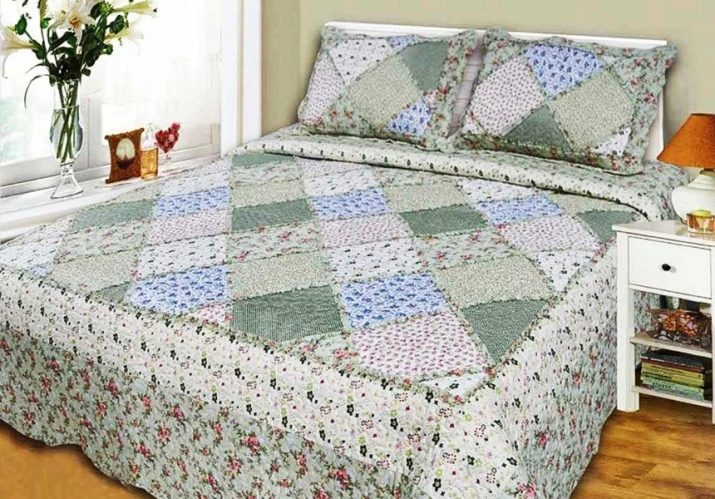
- Bright patchwork mosaic.
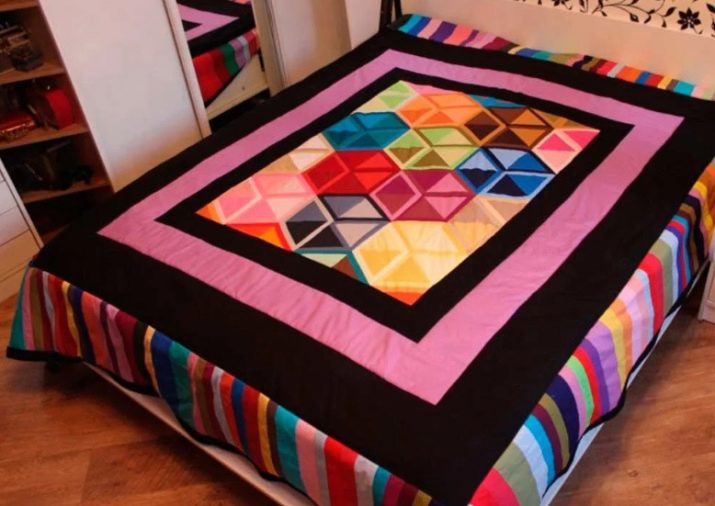
Patchwork pieces are eye-catching and unique, impossible to duplicate. A patchwork quilt will make any interior original and cozy at home.
In the next video, you will learn how to easily sew a patchwork quilt from squares in 30 minutes.








